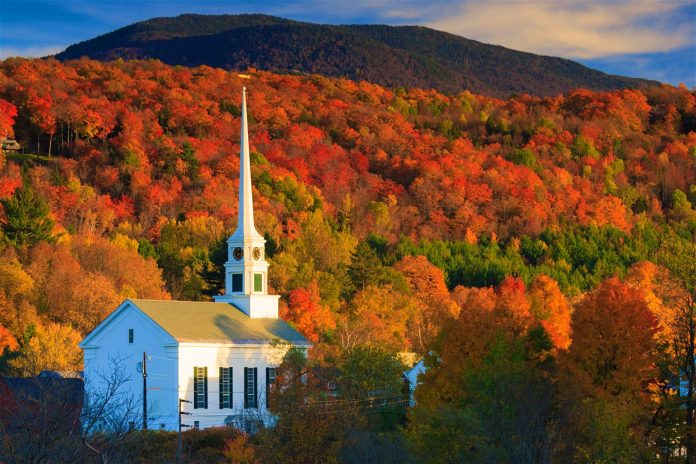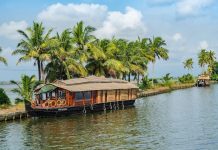The fall season is when even the most chronically plant-blind suddenly find themselves in love with leaves, staring longingly out of office windows and snapping photos of the new colors of autumn. Those changing colors are captivating – and, sadly, it can all be over before you’ve even thought of traveling to the prime places to witness it. For foliage lovers who want to know where to go to see fall in all its finery, we’ve raked together a pile of the top leaf-peeping spots across the USA.

Stowe, Vermont
New England is synonymous with fall colors in the US, and for good reason: if you visit at the right time, the vast sweeps of reds and golds are unmatched. Much of the credit can go to the sugar maple, native to the northeast and adjacent parts of Canada, but a host of other trees including oaks, alders and basswood add daubs of yellows and oranges to the palette. Stowe, the unofficial (but totally justified) capital of fall color, is the perfect base camp for leafy adventures, connected to hundreds of miles of hiking and bike trails, and boasting easy access to the highest points of the Green Mountains. Fall-color ogling in Vermont is such a seasonal tourism draw that there are multiple services that track peak foliage locations through autumn, and hotels book up well in advance.

Blue Ridge Parkway, North Carolina and Virginia
The autumnal equinox is the same day on every calendar in the northern hemisphere, but the trees aren’t taking any notice – they’re tracking the weather instead. The higher in elevation or the further north you go, the sooner the colors start changing. The scenic Blue Ridge Parkway – a 469-mile road from Virginia to North Carolina that connects Shenandoah National Park and Great Smoky Mountains National Park – ranges from around 650ft to over 6000ft in elevation, resulting in a mixture of colors and varying tree communities all along the route. The maples here are different from the sugar maples up north, and you get dozens of other trees, from red dogwoods and scarlet oaks to yellow persimmons and multi-colored sumacs.
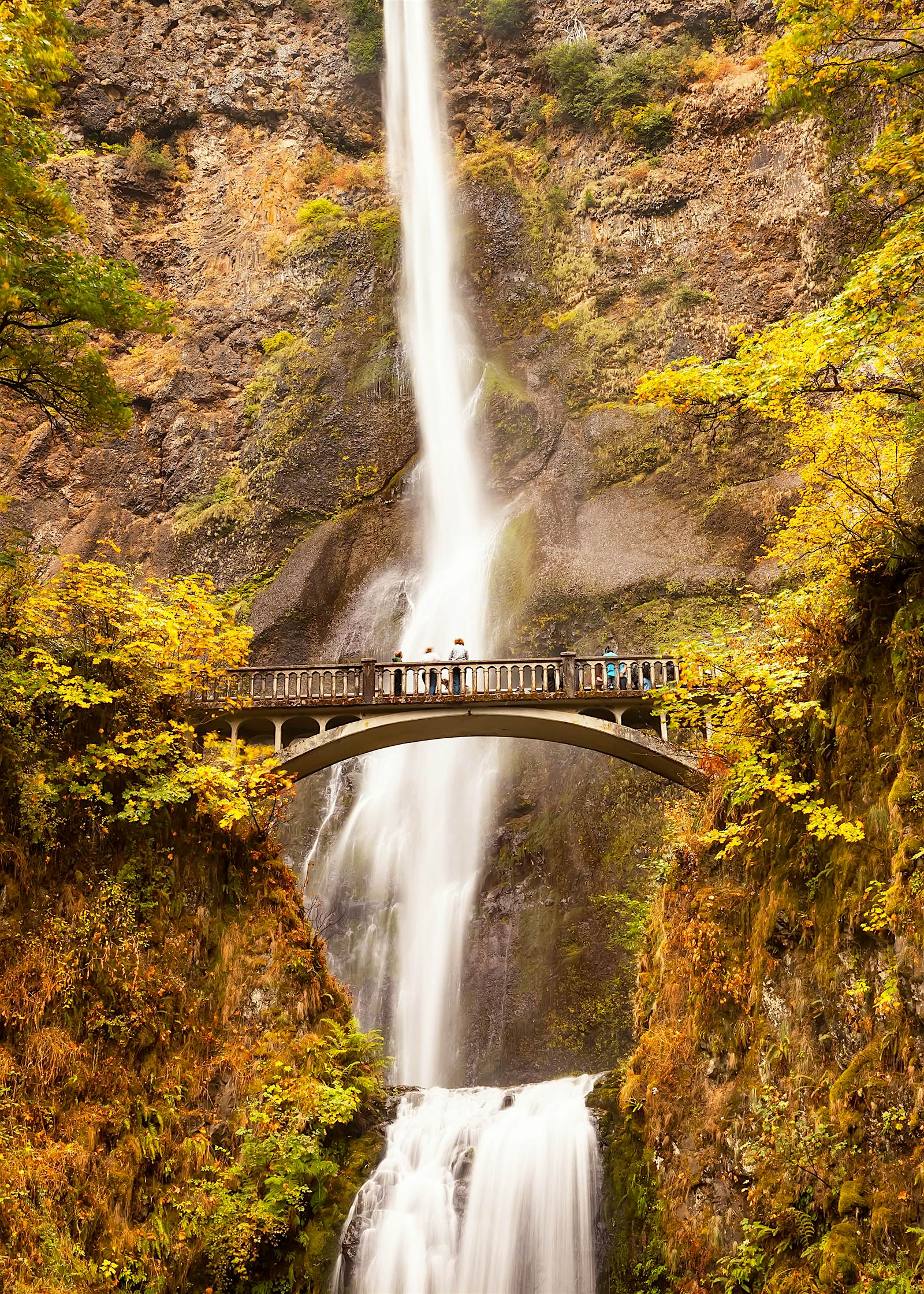
Columbia River Gorge, Oregon
Oregon – in fact, most of the West – is known for vast evergreen forests, and when you’re on the hunt for fall colors you’re looking for leaves that drop. Sorry, evergreens. But the forests of the West hold many surprises, especially if you follow the rivers where many of the deciduous trees thrive. An autumn drive down the Columbia River Gorge outside of Portland will greet you with fall colors from three species of maple and alders, framing the many waterfalls of the gorge, including the famous Multnomah Falls with its arching bridge. For a longer tour, take the full Mt Hood Scenic Loop, a three- to four-hour drive that follows the Columbia River then circles back around the snow-capped peak of Oregon’s tallest mountain following more colors along the east fork of the Hood River.
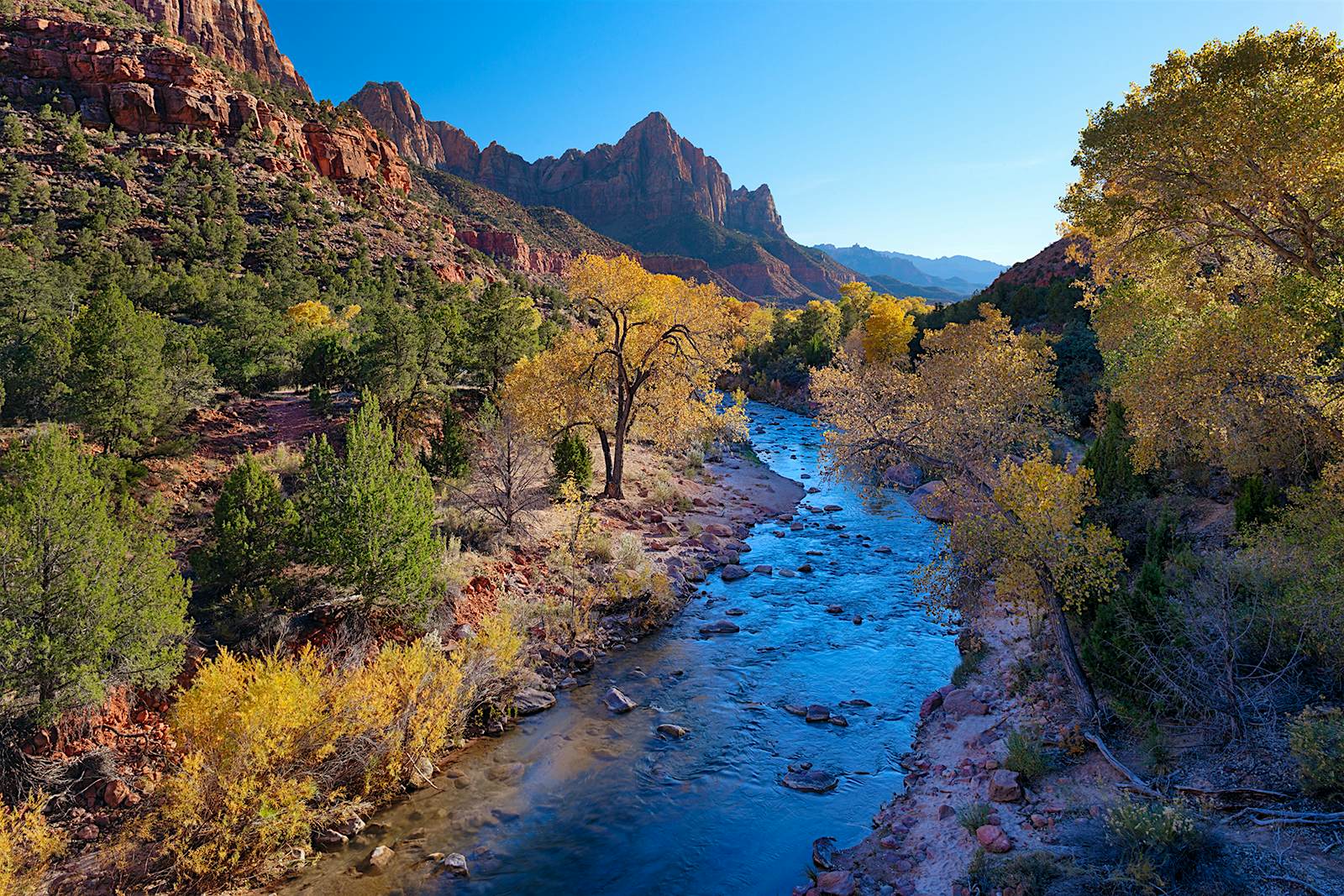
Zion National Park, Utah
In the fall, the heavy crowds and high temperatures of summer fade away in Zion — and there’s a surprise: glorious fall colors in the desert. You won’t find the vast forests all changing color at once like in New England, but what you will find is as striking: spots of brilliant crimson maples, burnt-orange oaks, and vibrant yellows of box elders and cottonwoods tracing the creeks, all set against the striking blue desert sky and the pale rocks of Zion. The popular Emerald Pools trail hike, starting from the lodge and climbing past waterfalls and crystalline pools, provides an easy tour of the deciduous trees of Zion. Or lose the crowds entirely, and explore the lonesome arroyos of East Zion where you can have hidden maple groves all to yourself.
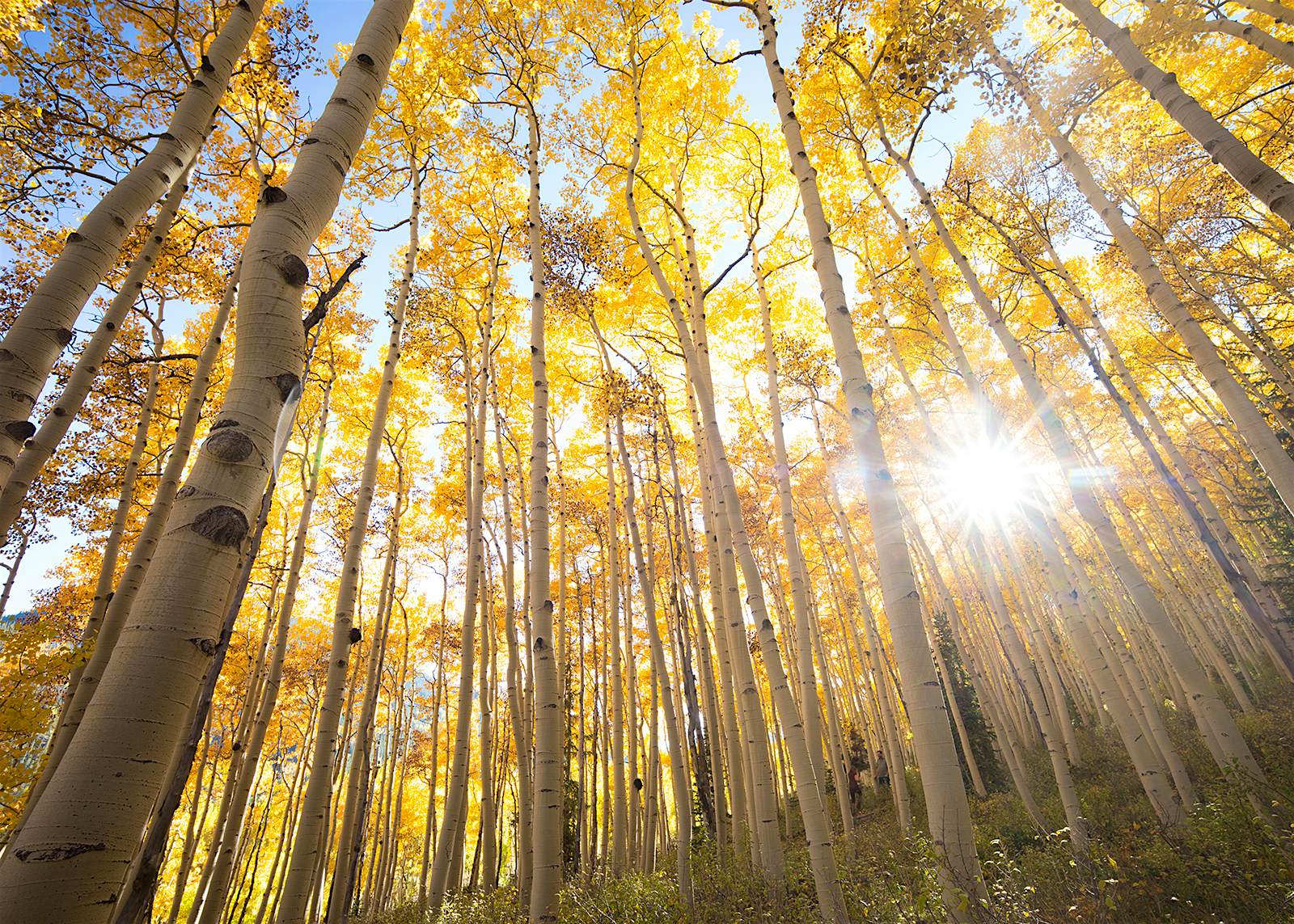
Telluride, Colorado
Between the famed festival season of summer and the winter ski season, the Rocky Mountain town of Telluride pulls in plenty of visitors. But wedged in between, from mid-September to mid-October, is perhaps the most beautiful season of all: when the forests of aspens turn gold. They’re called quaking aspens for a reason: the slightest breeze causes their leaves to flutter and twist, making the trees look like they’re rippling with golden light. Telluride’s free public gondola takes you from the valley floor on an eight-mile ride up the mountain: you can take in the aspens from the sky and then hike down through them at your leisure.
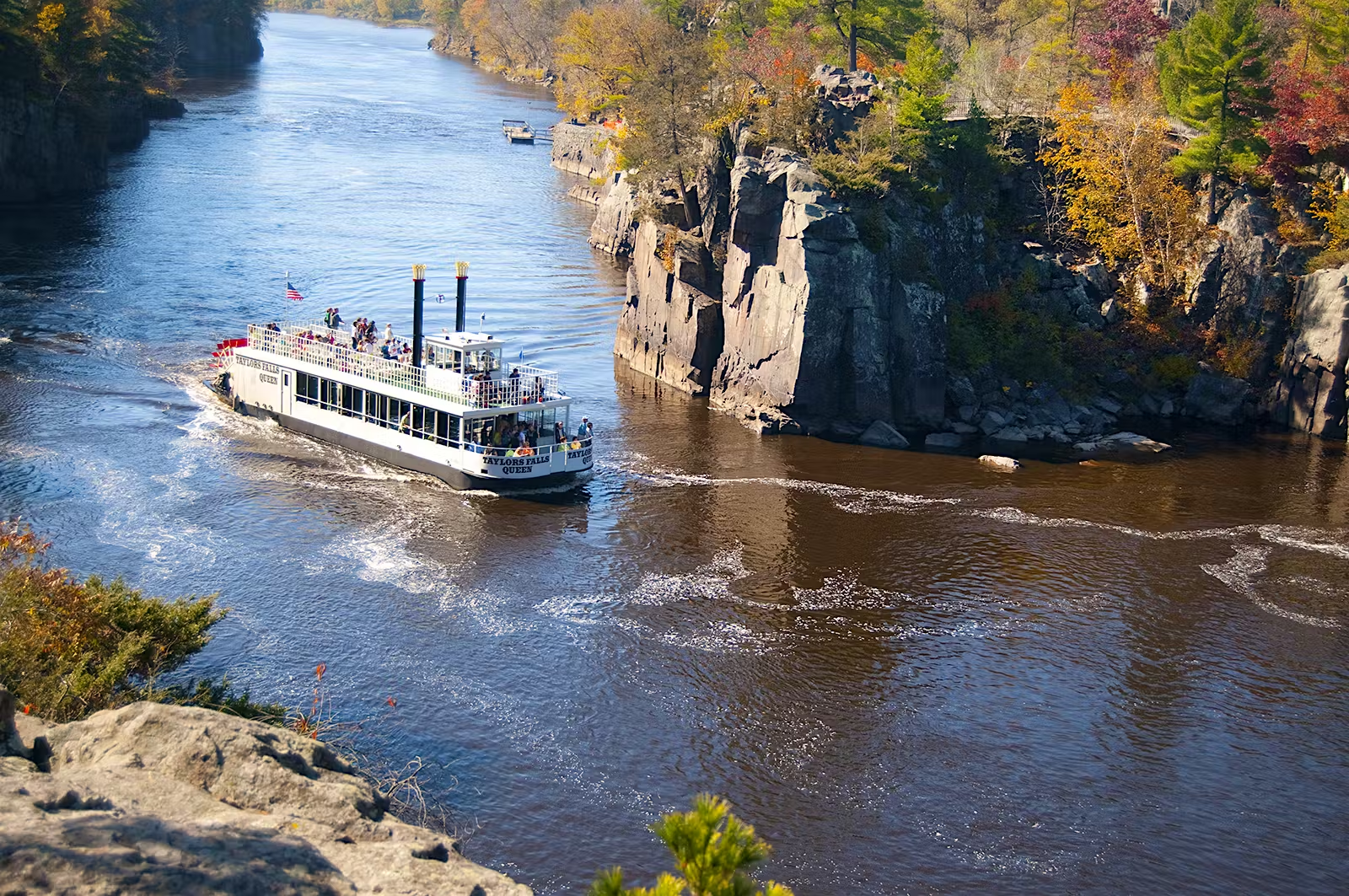
Stillwater, Minnesota
Minnesota may be known as the land of 1000 lakes, but it’s also a land of rivers. Head east from Minneapolis and you hit Stillwater, a historic logging town on the banks of the St. Croix River overlooking Wisconsin. Stillwater is a draw at other times of the year for its historic paddle-wheel steamboats and old-timey atmosphere, but in the fall the hills along the St. Croix light up with the orange and reds of autumn leaves. Take in the leafy hues from one of the daily public riverboat cruises, or cross the river on the St. Croix Crossing bridge.
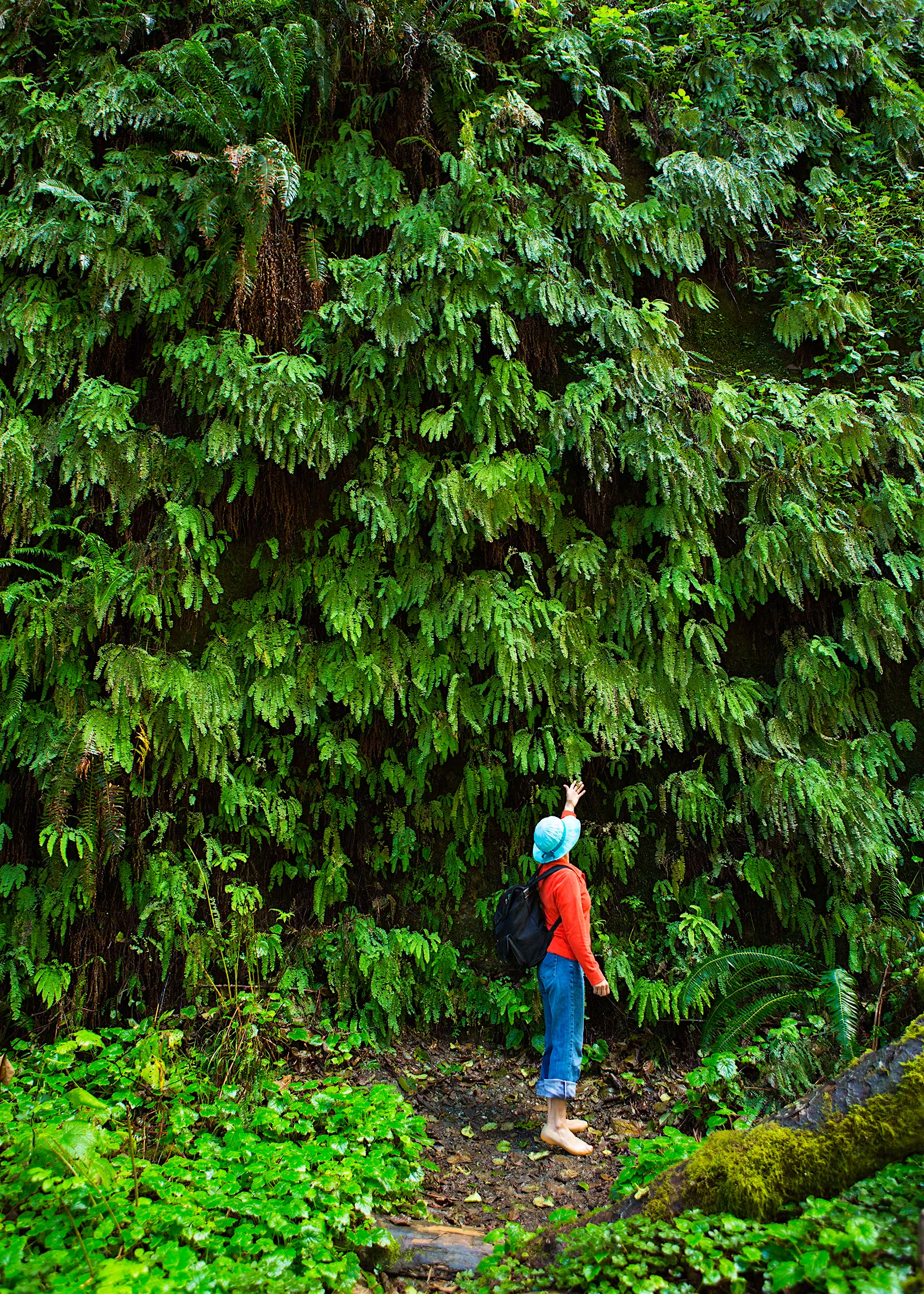
Fern Canyon, California
Who decided that green leaves weren’t worthy of a trip? Fern Canyon will set the record straight. The 60ft-high sheer walls of the creek canyon set back from the California coast in Prairie Creek Redwoods State Park are completely covered in dripping mosses and ferns, including spectacular five-fingered ferns. It’s easy to see why Steven Spielberg used it as a shooting location for The Lost World: Jurassic Park: it feels primordial. In the summer months, there are footbridges to help criss-cross the creek, but prepare to get wet feet the rest of the year. Despite feeling quite remote, this trail can get busy, so plan to hit it early if you want quiet and people-free photos.
Louisville, Kentucky
If you’re seeing colors around Louisville, it doesn’t necessarily mean you’ve sampled too much of the local bourbon. You don’t even need to leave Kentucky’s largest city to enjoy the changing of the seasons. A stroll around the gas-lamp-lit St. James Court and the Old Louisville rows of Victorian-era homes is made all the more atmospheric by the colorful fall foliage. Louisville has 50 miles of bike trails along the Ohio River and Floyds Fork, with more in the works as the city completes the long-planned 100-mile Louisville Loop path. A short drive south of the city takes you to Bernheim Arboretum and Research Forest, with over 40 miles of trails open to walkers and bikers, and a canopy tree walk that takes you 70ft up into the trees themselves.

